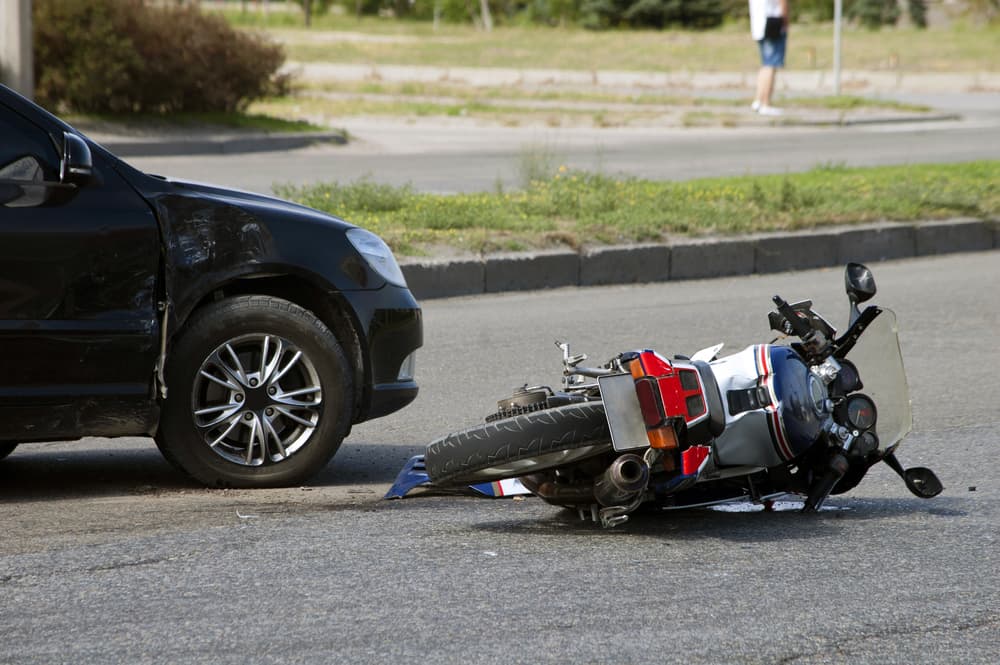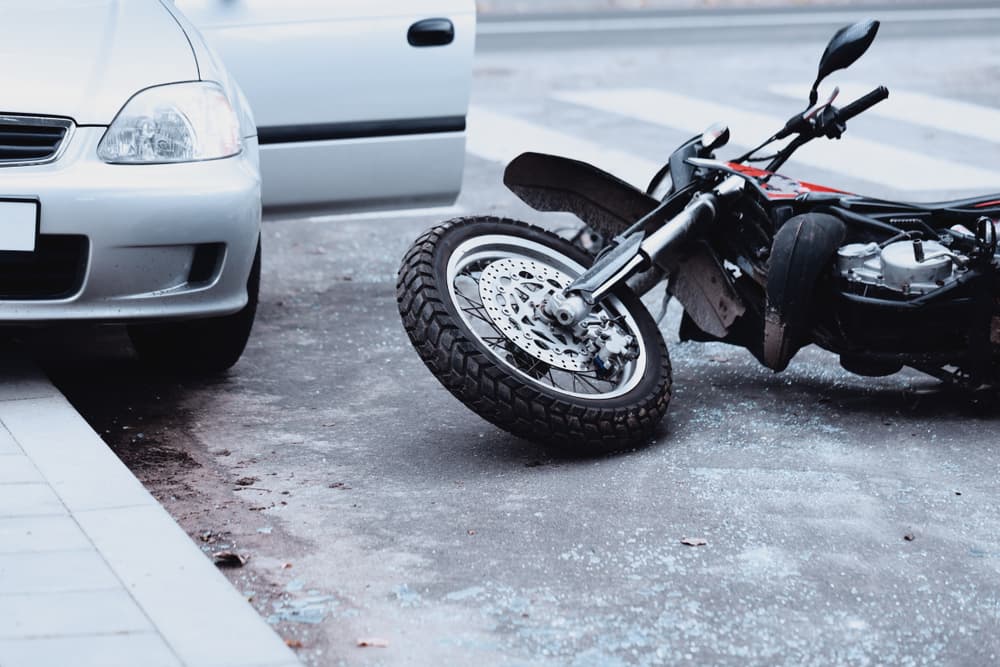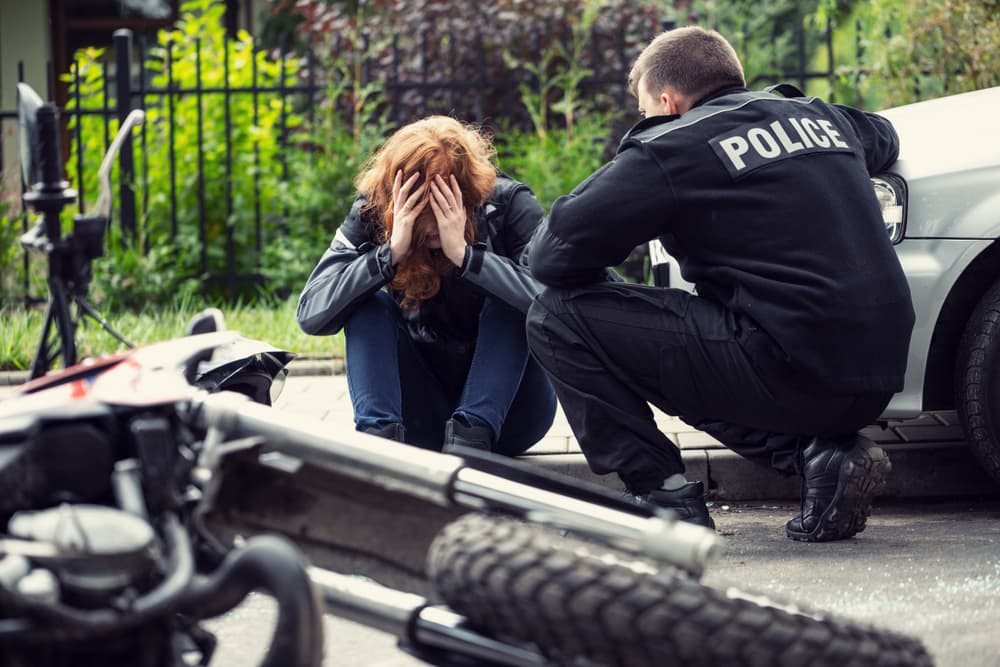Motorcycles offer an exciting sense of freedom, speed, and adventure. The wind whips by as riders travel down the road, and they feel more connected to their surroundings than someone in a car or truck. Unfortunately, this thrill can sometimes come with risks beyond a rider’s control.
While many people assume motorcyclists are reckless, that is not the main reason accidents happen. Many outside factors can lead to motorcycle accidents. These include everything from careless drivers in cars to poor road conditions and harsh weather. By understanding these factors, we can help make the roads safer for everyone.
If you or a loved one has suffered an injury in a motorcycle accident, after seeking medical attention, it is always best to contact a seasoned attorney. A seasoned and knowledgeable Atlanta motorcycle accident lawyer can will help you understand your options and next steps.
Table of Contents
- What Role Does Weather Play in Motorcycle Accidents?
- How Do Other Drivers Impact Motorcycle Accidents?
- Is Distracted Driving a Major Risk for Motorcyclists?
- What About Speeding and Reckless Driving?
- Can Road Conditions Cause Motorcycle Accidents?
- Do Vehicle or Equipment Problems Lead to Crashes?
- How Does Drunk Driving Affect Motorcycle Safety?
- Why Are Blind Spots So Dangerous for Motorcyclists?
- Contact a Skilled Motorcycle Accident Lawyer
What Role Does Weather Play in Motorcycle Accidents?
Rain can be a major factor in motorcycle accidents because it reduces visibility for everyone on the road. Car and truck drivers may have trouble seeing motorcycles when heavy rain occurs. Even light rain can make it more difficult to spot a bike in the distance. Water can also collect on a motorcyclist’s visor, further limiting their line of sight. Sometimes, vehicles behind them do not allow enough space, and this can lead to a crash.
Rainy conditions also create slippery roads. Because motorcycles have less contact with the ground than cars, the risk of skidding is higher. Oil and dirt can mix with water on the road, creating slick patches. Even the best tires struggle to grip when water and debris coat the road.
Fog, Snow, and Ice
Fog is another type of weather condition that limits visibility. Thick fog can come on quickly, making it hard for drivers to see motorcycles, especially when they are further away. When car or truck drivers do not slow down or use extra caution, it can lead to accidents.
Snow and ice are known to be dangerous for any vehicle, but they pose an extra risk for motorcycles. Even a thin layer of ice can cause a bike to slide. If other drivers do not realize how dangerous the roads are, they might follow too closely or make sudden moves, increasing the risk of a collision.
Wind and Debris
Strong wind can also pose problems for motorcycles. Gusts of wind can push a motorcycle sideways, especially on highways or open roads. Meanwhile, debris carried by the wind, such as branches or trash, can appear suddenly and cause a motorcyclist to swerve. If other vehicles are tailgating or not paying attention, they may not react in time, resulting in an accident.
Weather may be unpredictable, but drivers can learn to adjust their habits to keep everyone safe. Unfortunately, not all drivers do so, and the weather can contribute to motorcycle accidents. A skilled motorcycle accident injury attorney can determine fault and pursue the compensation you deserve for your injuries.
How Do Other Drivers Impact Motorcycle Accidents?

Motorcycles get hit mainly because other drivers do not look carefully. Cars are bigger, have more metal around them, and often block a driver’s view of smaller vehicles on the road. Even if a motorcyclist follows the rules, a driver might change lanes or turn in front of them without warning.
Many drivers never learn to pay special attention to motorcycles in traffic. Even if drivers learn to "look twice," they may slip into old habits. Distractions like texting, adjusting the radio, or talking with passengers can mean they do not see a motorcyclist in time.
Cutting Off or Following Too Closely
Some drivers might not respect the space motorcycles need on the road. A car might cut off a motorcycle, pass dangerously, or follow so closely that there is no room to avoid a sudden brake. Motorcycles can stop quickly, but if a car driver is tailgating, they may rear-end the bike.
Intersection Accidents
Many serious crashes happen at intersections. When drivers turn left, they might not notice a motorcycle going straight. The driver can turn into the bike, causing a serious collision. Even if the motorcyclist wears bright clothing or has the headlight on, the driver might still fail to see them until it is too late.
Is Distracted Driving a Major Risk for Motorcyclists?
Distracted driving includes any activity that takes a driver’s attention away from the road. It can be texting, checking social media, using GPS, eating, or even turning around to talk to someone in the back seat. Every second spent looking away from traffic is a second in which a motorcycle can enter a vehicle’s blind spot or cross in front of it.
Consequences of Distractions
Distractions may not seem like a big deal to some people, but even a moment of inattention can cause a crash. When drivers look up from their phones or meals, they might not have enough time to see the motorcycle and react. Distracted driving can lead to rear-end collisions, sideswipes, or other crashes that injure riders.
Because motorcycles are smaller, drivers must pay special attention. If a driver is distracted, the chance that they will notice a motorcycle in time is much lower. The result can be a severe accident that the driver can have avoided by staying focused on the road.
The Need for Awareness
Distracted driving has become more common, especially with the rise of smartphones. If we want to reduce the number of motorcycle accidents, we need all drivers to stay aware. That means putting down phones, stopping the habit of eating or grooming behind the wheel and giving the road the full attention it deserves.
What About Speeding and Reckless Driving?

Speeding makes accidents more likely. The faster a vehicle goes, the harder it becomes to slow down or maneuver if something unexpected happens. Many drivers speed without thinking about how it affects those around them. High-speed crashes are especially risky for motorcycles because there is less physical protection than cars.
When drivers of cars or trucks speed, they might not have time to notice a motorcycle, especially at intersections or changing lanes. A quick lane change at high speed can be deadly if a bike is in the blind spot.
Reckless Driving Behaviors
Reckless driving can include weaving in and out of lanes, tailgating, ignoring traffic signals, and cutting off other vehicles. While some people may think they are just being bold or saving time, these actions endanger motorcyclists on the road. Again, it is usually not the motorcyclist causing the reckless situation. Rather, it might be a driver who is not following the rules and not respecting the safety of those around them.
Victims of Negligent Driving
Motorcyclists can end up as victims when other drivers speed or act negligently. Even if the motorcyclist is riding carefully and obeying traffic laws, a speeding driver might not give them enough space or time to react. This can lead to devastating consequences.
Can Road Conditions Cause Motorcycle Accidents?
Road conditions play a larger part in motorcycle accidents than many people realize. Potholes, common in places with harsh winters or heavy traffic, can be especially hazardous for motorcycles. Hitting a deep pothole can cause a rider to lose control. Uneven roads, cracks, and unexpected bumps also increase the risk of crashing.
Poor Maintenance and Debris
Sometimes, roads are not swept or maintained. Debris, like loose gravel, trash, or fallen branches, can make it tough for motorcycles to remain stable. A car might roll right over a small piece of debris, barely noticing it. But a motorcycle hitting that debris can slide, wobble, or tip over.
Bad Road Design
Sharp turns without proper warning, lack of guardrails, or confusing lane markings can also lead to motorcycle accidents. If the layout of the road is unclear, drivers may drift into a motorcyclist’s lane. If a turn is sharper than expected, a rider might need to slow down fast, and a trailing vehicle can crash into them.
When roads are not well-maintained or designed, motorcyclists often face the most danger. They rely on good road conditions to keep stable and avoid sudden hazards that four-wheeled vehicles might handle with less trouble.
Do Vehicle or Equipment Problems Lead to Crashes?
Like all vehicles, motorcycles need regular upkeep to stay roadworthy. However, many riders take their bikes in for proper service, change tires when needed, and fix mechanical issues immediately. Even so, manufacturers sometimes release flawed parts, or a mechanic does not do repairs correctly. These problems can lead to brake failures, engine troubles, or tire blowouts.
Issues with Cars and Trucks
It is not just motorcycle maintenance that matters. Drivers must keep cars and trucks in good shape to avoid accidents. Worn brakes, broken headlights, or defective tires on a car can cause a collision with a motorcycle. For example, if a car’s brake lights do not work, a motorcyclist might not realize the driver is slowing down until it is too late.
Aftermarket Parts and Modifications
Some people add custom parts to their motorcycles, such as new exhaust systems, special lights, or performance upgrades. If these parts are faulty or installed incorrectly, they can cause dangerous issues on the road. However, even when riders take care of their bikes, a mechanical failure in a nearby car or truck can often lead to a severe crash.
Vehicle and equipment failures can happen, but it is unfair to assume the motorcyclist is always at fault. Sometimes, the rider may have done everything right, only to be harmed by another vehicle’s mechanical problem.
How Does Drunk Driving Affect Motorcycle Safety?

Drunk driving is one of the most dangerous behaviors on the road. Alcohol and drugs reduce the driver’s ability to judge distances and react quickly. For a motorcycle rider, any collision or swerving from a drunk driver can be catastrophic.
Inability to Stay in Lane
When a driver is drunk, they often drift in and out of lanes. This can spell disaster for a motorcyclist traveling in a neighboring lane. The impaired driver might not notice they are crossing lane lines until too late.
Late-Night Risks
Many drunk driving incidents occur late at night. Visibility is already lower during these hours. When you mix darkness with an impaired driver, the risk for motorcyclists rises. A drunk driver might not react properly if a motorcycle has reflective gear and bright lights.
Motorcycle riders should not have to fear drunk drivers, but the sad truth is that it remains a major cause of accidents. Drunk drivers may walk away from an accident with minor injuries, but the motorcyclist can face life-changing harm.
Why Are Blind Spots So Dangerous for Motorcyclists?
Cars, trucks, and buses have blind spots where the driver cannot see other vehicles. Motorcycles, being smaller, fit into these blind spots more easily. If drivers do not check these areas by turning to look or using mirrors correctly, they may change lanes or merge without realizing a bike is there.
Sudden Lane Changes
Sometimes, drivers make sudden lane changes when they realize they are about to miss an exit or want to pass. If a motorcycle is in a blind spot, the driver might collide with it. This can lead to serious crashes on highways as vehicles travel at higher speeds.
Lack of Awareness
Even though vehicles have mirrors designed to reduce blind spots, many drivers fail to use them properly. Others might be distracted or assume nobody is there. This lack of awareness can be deadly for motorcyclists, who rely on drivers to check thoroughly before moving into a new lane.
Blind spots might seem small, but their impact on motorcyclists is huge. Drivers need to be aware that just because they do not see something does not mean it is not there.
Contact a Skilled Motorcycle Accident Lawyer
When an accident does happen, it can be life-changing for the motorcyclist. Medical bills, rehabilitation, and lost earnings may follow. If you or a loved one finds yourselves in this difficult situation, remember that help is available. Reaching out to a motorcycle accident lawyer can be important in protecting your rights and getting the support you need.
Take control of your future today. If you’ve been in a serious motorcycle accident and need help understanding your legal rights, consider contacting a skilled motorcycle accident lawyer.
They can guide you through the process, stand up for your interests, and work to secure the compensation you deserve. Your safety and well-being matter—don’t hesitate to seek the support you need.




























